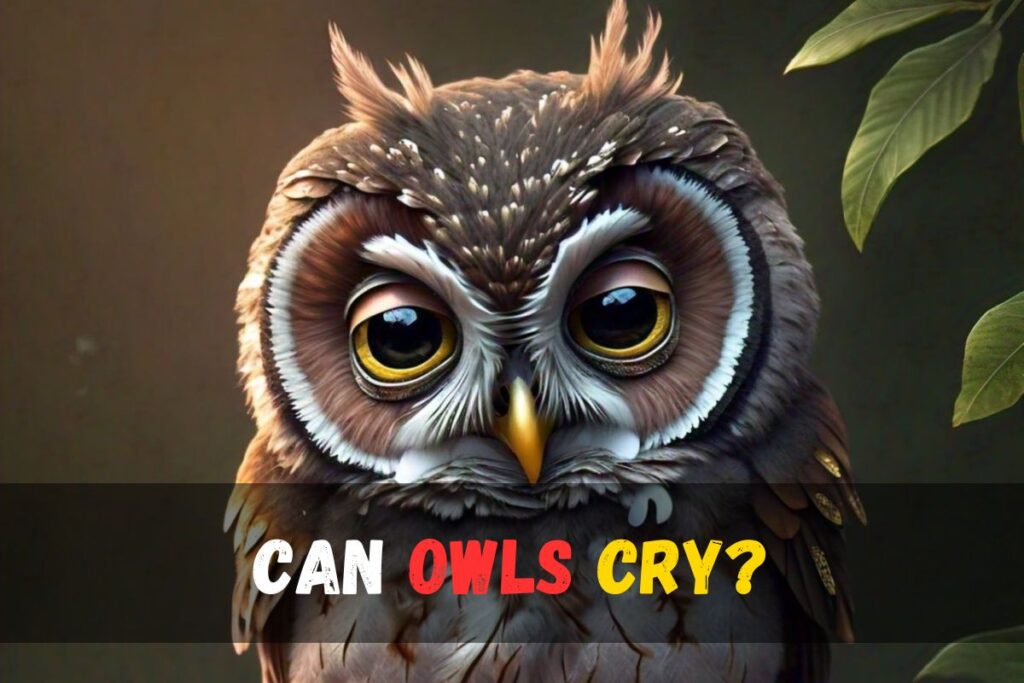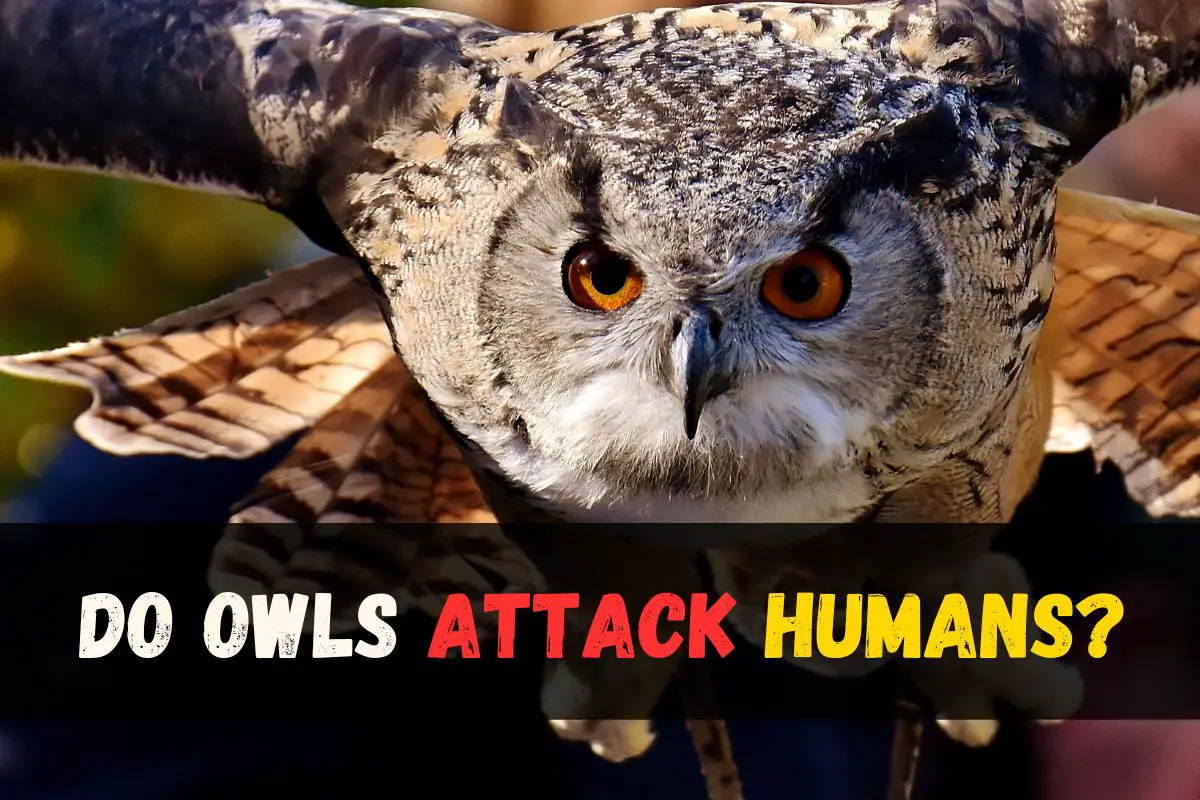Do owls attack humans?
Owls are fascinating creatures of the night, known for their impressive hunting skills and silent flights. While they primarily prey on rabbits, mice, rats, and small rodents, they have often been the subject of curiosity when it comes to their interactions with humans. The question that lingers is, do owls attack humans? Let’s delve into this intriguing aspect of owl behavior.
Owls are not typically aggressive towards humans. They prioritize hunting for their sustenance and protecting their territory and nest, rather than viewing people as potential prey. These magnificent birds of prey pose no direct threat to humans and are generally friendly, even when their nest or chicks are nearby.
In some rare cases, owls may feel threatened if humans approach their nesting sites or make loud noises, leading them to take defensive actions. However, it’s essential to understand that these instances are exceptions rather than the norm. Owls are not inherently dangerous to humans, and their primary focus is to hunt for survival and care for their young.
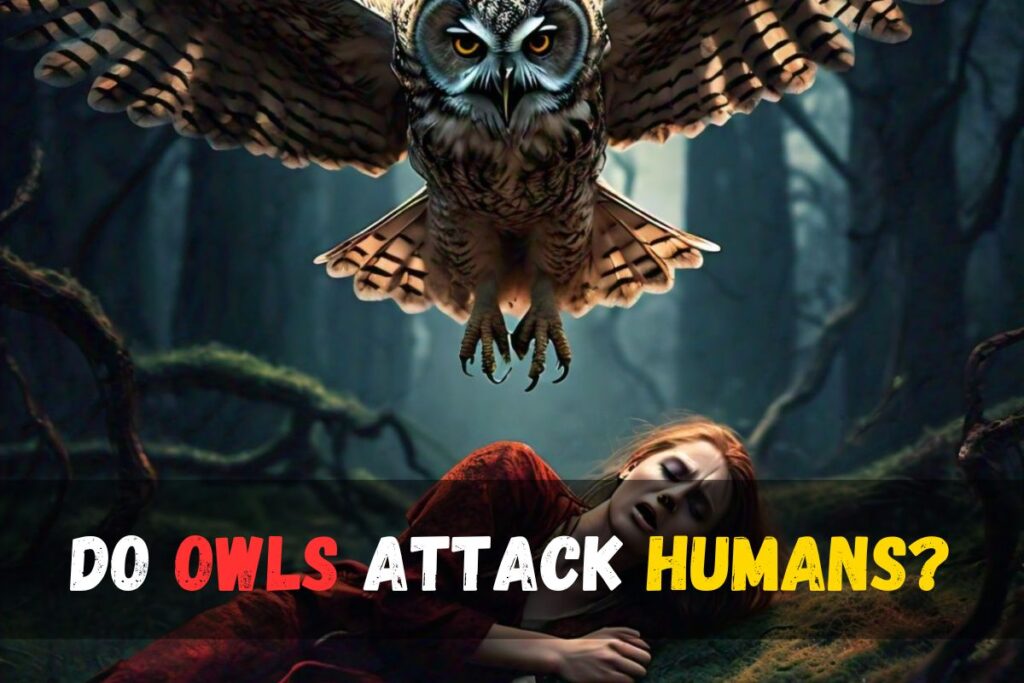
Can An Owl Attack Its Owner?
Owls are generally not aggressive animals, and attacks on their owners are rare. However, like any wild animal, owls can become aggressive or defensive if they feel threatened or cornered. Owls have sharp talons and beaks that they may use in self-defense if they perceive a danger. It’s important to remember that owls are not domesticated pets like dogs or cats, and they may not have the same level of socialization or predictability.
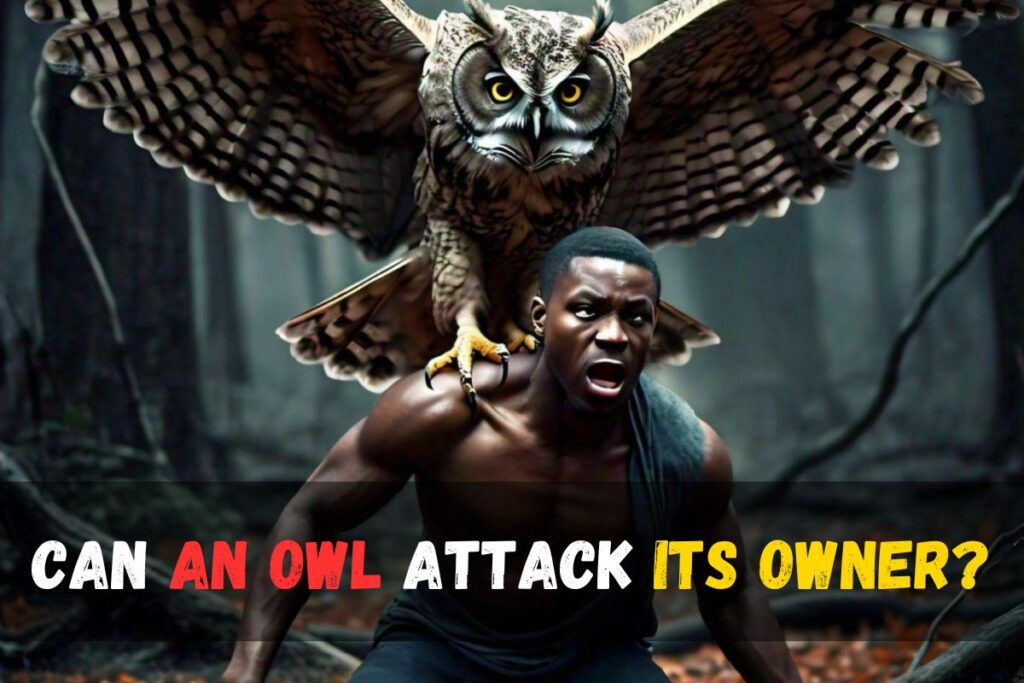
Related Post: Are owls dangerous
To minimize the risk of an owl attacking its owner, it’s crucial to handle them with care and respect their natural behaviors. If you are working with an owl, especially a wild or non-domesticated species, it’s best to have proper training and experience in owl handling. Always approach them with caution and avoid sudden movements or loud noises that could startle them. Additionally, it’s important to follow any legal regulations and permits regarding the ownership of owls in your area.
If you’re considering keeping an owl as a pet or working with one, it’s advisable to consult with a licensed wildlife rehabilitator or an expert in avian behavior to ensure the safety of both the owner and the owl. Remember that owls are wild creatures and may not make suitable pets for the average person.
How To Prevent Owl Attacks
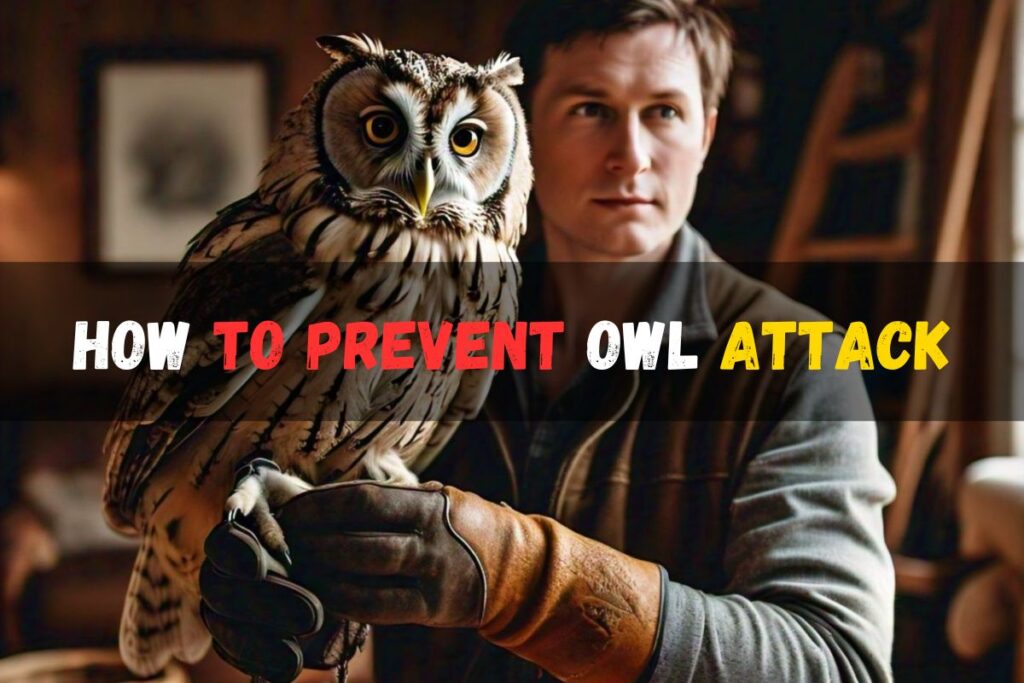
- Respect Their Habitat: Owls are more likely to be encountered near their nesting or hunting areas. Be aware of their habitats and try to avoid disturbing them. Stay away from their nests, especially during their breeding season.
- Avoid Being a Threat: To prevent defensive actions from owls, don’t approach them too closely or suddenly. If you spot an owl, maintain a respectful distance and use binoculars or a camera with a telephoto lens for a closer look.
- Be Mindful of Lighting: Owls are most active during dawn and dusk, and their vision is adapted to low light conditions. If you must be in an area known for owl activity during these times, use soft, low-intensity lighting to avoid startling them.
- Wear Appropriate Clothing: If you’re in an area where owls are present, try to wear clothing that doesn’t resemble their typical prey. Bright or reflective clothing might attract their attention and cause them to investigate.
- Keep Pets Under Control: If you’re walking your dog near owl habitats, keep your pet on a leash. Owls may see small dogs as potential prey, and a protective owl parent might become defensive if it perceives a threat to its nest or young.
- Respect Wildlife Laws: Follow local and national wildlife laws and regulations, which are designed to protect owls and their habitats.
- Educate Others: If you live in an area where owl encounters are common, educate your neighbors and community about owl behavior and the importance of respecting their space.
Related Post: Are Owls the Smartest
Do Owls Attack Humans At Night?
Owls are most active at night, a behavior known as being nocturnal, which is when they hunt for their preferred prey. If you encounter an owl at night, it is more likely to be focused on hunting for food rather than showing aggression towards humans. However, if an owl feels threatened or cornered, it may defend itself using its sharp talons and beak, which could result in scratches or minor injuries if a person tries to handle or approach the owl inappropriately.
To coexist peacefully with owls in their natural habitat, it’s important to respect their space and observe them from a distance, without trying to touch or provoke them. It’s rare for owls to pose any danger to humans as long as they are not provoked or threatened.
What To Do If an Owl Attacks You
If an owl attacks you, it’s important to remember that owls don’t typically view humans as prey. But sometimes, if you ever encounter a moment where an owl is flying down toward you, here are a few things you can do to keep yourself safe.
Cover Your Neck and Head
If you encounter an attacking owl, make sure to shield your neck and head because those are the parts where the owl can cause the most harm. Owls are silent fliers and often take their prey by surprise, so it’s crucial to be prepared. If you see an owl flying towards you, cover your neck and head with a solid object like a handbag, umbrella, or an article of clothing such as a hat or a coat if you have one. An umbrella can be particularly effective because owls tend to attack the highest part of your body. If you don’t have these objects, consider using your arms and hands to shield yourself from the owl’s attack. Also, keep in mind that owls might target your neck and head if they see you as prey. So, taking these precautions is really important to stay safe and avoid any harm.
Stay Calm and Stand Your Ground:
Owls typically do not attack humans unless they feel threatened or cornered. If an owl is swooping or flying around you, it’s essential to remain calm. Avoid making sudden movements or loud noises that could agitate the owl further. Standing your ground and not panicking is often enough to deter the owl from approaching.
Don’t kill the Owl
If you find yourself in a situation where an owl attacks you, it’s crucial to prioritize your safety. Avoid engaging in a direct confrontation or attempting to fight the owl. Your best chance of surviving such an encounter is to calmly and slowly retreat or run away from the owl. However, if you end up in a physical struggle with the owl, refrain from causing harm or attempting to kill it.
It’s important to understand that harming an owl, including its babies or nest, is a punishable offense in several countries such as the UK and the U.S., where fines or even imprisonment can be imposed for such actions. Therefore, the recommended action when faced with an owl attack is to focus on self-preservation and avoid harming the owl. Retreat calmly and seek safety without causing harm to the bird.
Back Away Slowly
Slowly back away from the owl while keeping it in your line of sight. The owl may have attacked because it felt cornered or threatened, so by retreating, you’re allowing it to escape the situation without feeling the need to defend itself.
Avoid Eye Contact
While maintaining eye contact can help deter the owl, direct and prolonged eye contact might be perceived as a challenge. You want to strike a balance between watching the owl and not appearing confrontational. If the owl is focused on you, turning your head slightly to the side can reduce the intensity of your gaze.
Do Not Scream or Yell
Loud noises and sudden movements can further agitate the owl. Try to remain quiet and composed. Shouting or screaming may make the owl more defensive or agitated.
FAQ’S
What Does It Mean if An Owl Stares At You?
When an owl stares at you, its behavior can convey different meanings depending on the context. Owls, unlike humans, cannot roll their eyes or move them independently. Instead, they must turn their entire heads to look at something. So, when an owl seems to be staring at you, it may not necessarily imply the same emotions or intentions as it would for a human.
In some cases, an owl might appear to be staring at you simply because it is too “lazy” to move its head to look elsewhere, as they have limited eye mobility. However, if you find yourself in an area known to be an owl’s territory and an owl is watching your movements closely, it’s likely assessing whether you pose a threat. Owls are known to be territorial creatures, and their vigilant observation could be a sign that they are trying to determine if you’re a potential danger.
Do Owls Bite?
Owls primarily attack using their sharp and powerful talons rather than their small beaks. While they do not “bite” in the traditional sense, their talons can generate a biting force equivalent to that of a dog. When owls attack humans, they usually target the head, and their strong talons can cause a significant amount of damage, including tearing facial skin and leaving severe owl attack marks. So, while owls don’t bite with their beaks, they can inflict serious injuries with their talons when they attack.
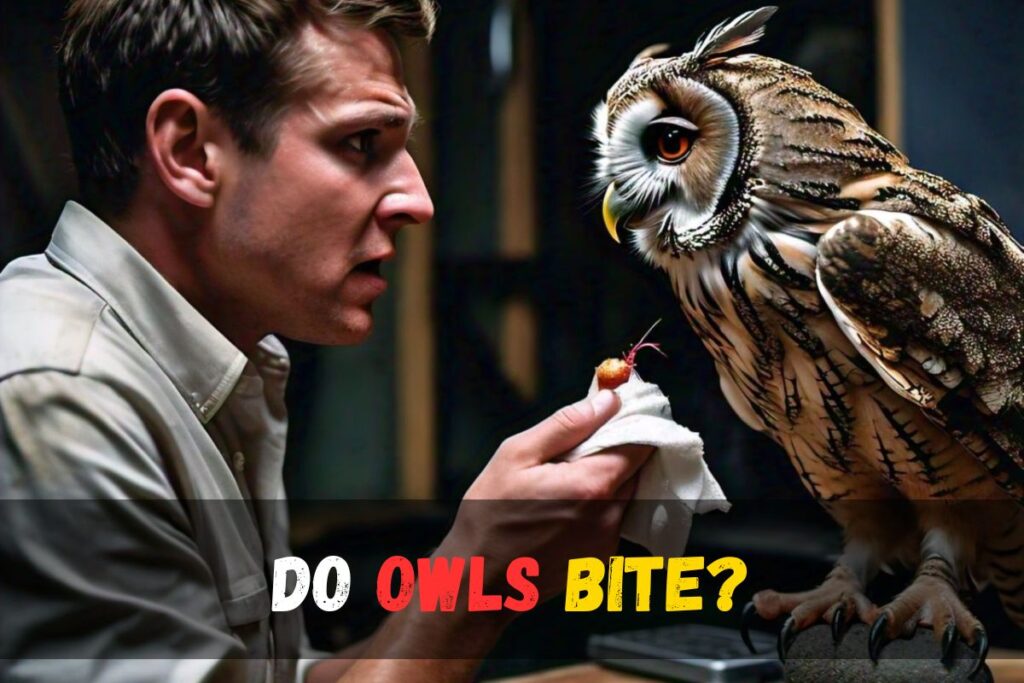
Can owls cry?
Owls do not cry in the way humans do, but they make various vocalizations to communicate and express themselves. Young owls are known to give piercing screams when they are begging for food. Meanwhile, adult owls may scream to defend their nest. In addition to screams, owls produce an array of other sounds, including whistles, barks, shrieks, hisses, coos, and wavering cries. So, while they may not cry in the traditional sense, they do use vocalizations as part of their communication and behavior.
